Ambassador of Romania to Ukraine: "Business has to be compensated for the damage caused by russian aggression since 2014"
Alexandru-Victor Micula speaks about the Romanian companies currently operating in Ukraine, the impact of the great war on them, and their expectations from the Ukrainian authorities

After russia announced its withdrawal from the Grain Deal on 17 July, Ukraine faced an urgent question of alternative ways to export its grain products. In addition to this, last week it became known that five of Ukraine's neighbouring countries – Romania, Poland, Hungary, Slovakia and Bulgaria – want the European Commission to extend the ban on imports of Ukrainian agricultural products (wheat, corn, rapeseed and sunflower seeds).
They want the restrictions to remain in place after 15 September 2023, when the current ones expire. This was emphasised by the Hungarian Minister of Agriculture István Nagy in a recent interview with the Vilaggazdasag paper: "As for the import restrictions, Hungary shares the position of Bulgaria, Poland, Romania and Slovakia, which is that the European Commission should extend the ban on imports of Ukrainian agricultural products even after 15 September, as this is the only way to protect the interests of European farmers." And on 19 July, Reuters reported that Ukraine's closest partners – Romania, Poland, Hungary, Slovakia and Bulgaria – signed a declaration calling for the ban on Ukrainian grain imports to be extended until 31 December 2023. And all this against the backdrop of Zelensky's claim that the European Commission had promised him to lift restrictions on imports of Ukrainian agricultural products after 15 September...
Mind asked Romanian Ambassador Alexandru-Victor Micula about these problems and how Romanian investors feel in Ukraine, what their interest is today, whether there are chances to increase cooperation between our countries in the near future, and what affects the investment attractiveness of our country.
– We were not a large investor in Ukraine prior to the war. However, the challenges faced by Romanian companies were similar to those faced by domestic entrepreneurs. For example, energy shortages after the russian attacks on the energy infrastructure of Ukraine significantly affected our investors’ operation. So now, first and foremost, they need to ensure security of their staff from military attacks and reorganise supply and distribution chains.
– Speaking about Romanian investment dynamics in pre-war 2021 and in 2022, the war year, what parameters have changed?
– Prior to the large-scale invasion of russian troops, around $30 million was invested in Ukrainian economy, and this figure currently remains more or less unchanged.
However, our expectations lie within the context of implementing the Association Agreement of Ukraine with the EU and future negotiations on Ukraine’s accession to the EU. We hope such negotiations begin by the end of this year. After that the Ukrainian business climate will become more attractive for potential partners from the EU and Romanian companies, and investment indicators increase significantly.
– Location-wise, where has the maximum of Romanian investment been focused in pre-war times?
The major share of investment is located in Odesa region – namely, related logistics, due to the economic importance of the Odesa port. Same applies to Chernivtsi Oblast, where furniture and clothing production facilities are linked to economic hubs in Romanian such as Iasi and Suceava. Naturally, after February 24, 2022, they had to face certain difficulties, but continue to operate.
– What sectors had received the maximum of Romanian investment in recent years?
In pre-war times the ІТ sector was an attractive one, and it is even more so nowadays. Same applies to logistics. Energy was attractive to our investors in times of peace, and it is even more appealing now. After all, there is a great potential in the context of the Green Deal promoted by the EU.
– Indeed, before the war Romania was interested in joint mass-scale logistics and energy projects. Which of them are currently operable?
– In energy sector, we had some projects that started before the war, and the war just accelerated them. We started synchronising our electricity networks: the process was finalised by the spring of 2022. Resulting from this, energy imports and exports started between Romania and Ukraine in June 2022. On the part of Ukraine, the Ukrenergo company participates in the project, and Transelectrica company on the part of Romania. We commenced operation with 300 MW capacity, and then upscaled to 1000 MW. Currently, we aim to reach 2000 MW. This project is of strategic importance as well, as it assists equilibrating the Ukrainian power grid during blackouts.
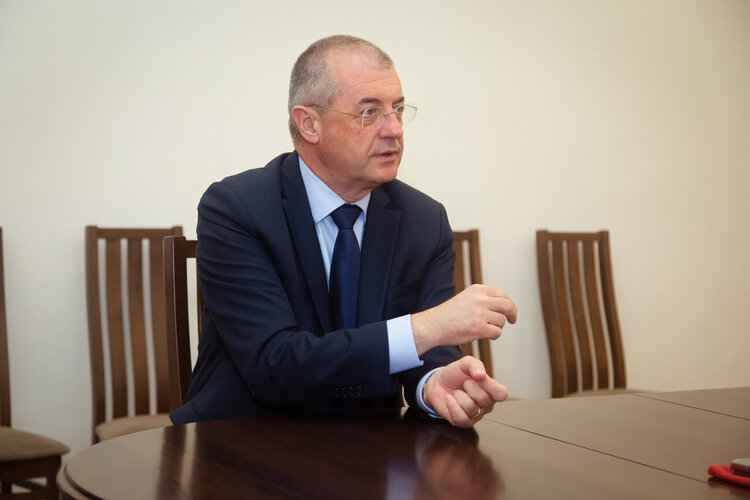
This January, through our cooperation with Ukrainian Railways (Ukrzaliznytsia) and the Romanian CFR, the railway border crossing point Dilove in Transcarpathia was unveiled – it is used for passenger train communication between our countries.
And this February, another roadway border checkpoint was opened in Dyakivtsy, Chernivtsi Oblast.
Infrastructure projects, such as the ones mentioned, allow our private companies to interact and conduct joint business easier.
– Please name top-3 largest Romanian companies operating in Ukraine and top-3 sectors in Ukraine most attractive for Romanian business, despite the war.
– It is predominantly small and medium-sized companies that operate in Ukraine. And most of them work in logistics and IT sectors. There are also textile and furniture production facilities. I cannot, though, mention the names of these companies, as the Embassy does not engage in marketing.
In recent years, the largest Romanian investment into Ukrainian economy was in the field of logistics. Location-wise, it was in Odesa region.
– How many Romanian companies operate in Ukraine now?
– I believe, about a hundred. These are small and medium companies. There is no large Romanian business in Ukraine.
At the same time, I can quote figures on the stance of Ukrainian investment into Romania. As of today, some 1,751 Ukrainian companies have been registered. And as of April 30, 2023, Ukraine invested $138 million into Romanian economy. This is 0.71% of total foreign investment into Romania. This means that Ukraine takes the 32nd place in our foreign investor rating.
– What are the most attractive sectors for Ukrainians in Romania?
– First, it is the IT sector and logistics – the Ukrainians have founded several logistics centers in Romania. They also started running food stores selling foods produced in Ukraine. And, naturally, services sector – including hotel services, tourist industry and automotive services industry.
The mentioned above include small and medium companies as well. So far, there is no talk of “large Ukrainian players” at our market yet.
– Are there particular sectors of Romanian economy that await Ukrainian investment?
– Romania has a great potential for investment. It is an EU member state. We have an advantageous geographical position for conducting trade with North Africa, the Middle East, the Caucasus and Western Europe. Therefore, as long as foreign investors conscientiously pay their taxes, they are welcome everywhere.
– Were there any cases when Ukrainian entrepreneurs dodged paying taxes in Romania?
– It is not necessarily about Ukrainian business. Sometimes there are companies within market economy that have an extremely short life-span...
– Are there any difficulties for Ukrainian companies to access the Romanian market?
– I think the biggest obstacle lies in cultural differences. Our language is one of the most different to the Ukrainian among all other neighbor countries. If you go to Poland, Slovakia, Czechia or Croatia, you find little trouble communicating. And in case of Romania, as soon as you cross the border – the language is completely different, the alphabet is different. Therefore, to familiarise yourself with our legislation, you should undertake more effort than in other countries with Slavic languages.
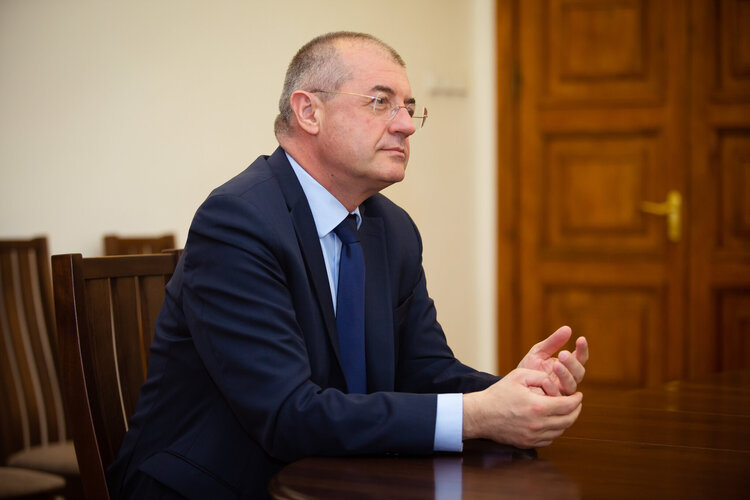
As for legislation itself, it is not too different from the one in other EU member states. Differences are mostly found in local investment incentive programs. For example, local authorities may approve local tax exemptions for a certain period depending on foreign investment amounts, or grant access to industrial parks. In general, local authorities in Romania are quite active in attracting investors.
– Are there any Romanian businesses in the russia-occupied territories after February 24, 2022? And whether there is any potential to get reparations/ compensations?
– The Embassy was not contacted by Romanian companies on respective issues. There may be, though, some very small businesses. Perhaps some shares of some small businesses were confiscated by the russians back in 2014, when they occupied Donbas. There have been complaints that hotel/ restaurant level investments have been lost, but we remain unaware about any compensation.
In such matters we are guided by principles, not by specific companies. Irrespective of nationality, businesses should receive compensation for damages caused by russian aggression starting in 2014. Therefore, we support the idea of creating an International Register of Damages to analyse russian aggression against Ukraine. By the way, Romania is one of the founders of the claims registry, recently created to receive complaints from companies affected by the russian aggression. The Register was launched under the auspices of the Council of Europe at the Reykjavik summit in May 2023.
– Let us discuss Ukrainian business-climate. What other concerns, apart from the war, have Romanian entrepreneurs?
– We are small foreign investors, and we started investing into other economies only recently. For the past 30 years, Romanian investors have been obsessed with striking business links with Western Europe, and hence some 75-80% of our contacts are with the West. Romanian investors are very confident in this business environment, and it is somewhat difficult for them to leave their comfort zone since they know how to do business in Western Europe. Therefore, it is sometimes difficult to convince them to master other ways of supporting their investment.
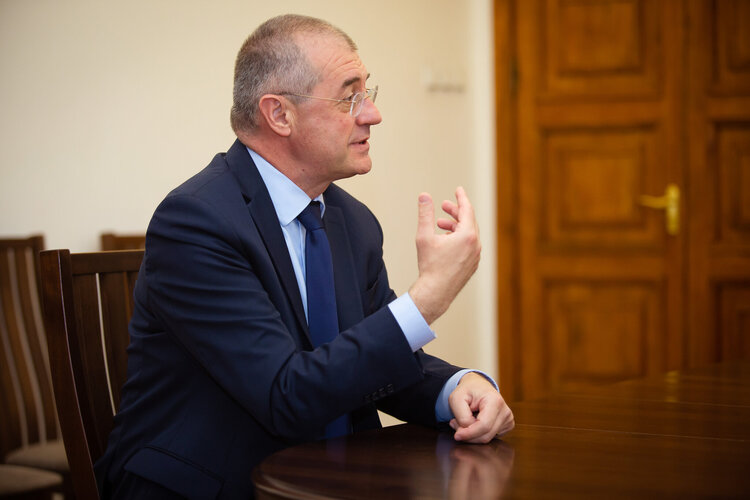
At the same time, some Romanian entrepreneurs have realized over the past decade, that they would be unable to develop further without investing outside the EU. Romania had little experience at Ukrainian market prior to the large-scale invasion. Still, I believe we can have a good potential for investment in the coming years. First, it is because now everyone knows where Ukraine is located and what it is, as previously Ukraine remained a mystery for most Romanians.
Now Romanians start taking interest in Ukrainian economy. Therefore, when Ukrainian business climate gets harmonised to the EU norms, namely, tax system is upgraded, and food and trade standards are enhanced, our investors will bring in more funds. In addition, Ukraine is turning to green energy, thus creating opportunities. In Ukraine, there are new processing lines, ecology-friendly and energy-saving ones. If the legislative reforms of the last 2 years will continue, Romanian investors will be interested in developing their business ties with Ukrainian partners.
– Do your entrepreneurs complain about illegal takeovers, bribery, unjust courts, customs, etc?
– Currently, the Embassy has no specific information of such cases. This does not necessarily mean that there are no such cases. It is possible that such issues get resolved directly with Ukrainian authorities or local partners.
Major share of complaints we receive today relate to the war and temporary restrictions that Ukrainian authorities introduce because of war and its impact on Ukrainian economy. For example, temporary export restrictions are introduced.
For example, last year a temporary restriction were imposed on wood pellets exports following intensification of russian attacks on the energy sector. Some Romanian businessmen imported wood pellets from Ukraine and, hence, complained that because of restrictions their contracts failed to be met. Still, such complaints did not turn into a formal protest, because the Romanians understand well the background and the need for such decisions.
Another recent example is the restriction on sugar exports from Ukraine. Ukrainian sugar exports have increased by 440% compared to the previous season. To avoid problems supplying sugar to local markets, Ukrainian authorities imposed a temporary ban on sugar exports – from June 5 to September 15, 2023. One Romanian company made an advance payment of $2 million for 15,000 tonnes of sugar. Prior to restrictions imposition, it received 8,000 tonnes of sugar, and now awaits the outstanding 7,000 tonnes.
We do understand the current Ukrainian situation, but we also do believe that the restrictions should not apply to this particular company – as their contract has been signed well before the restrictions introduction. Moreover, the Romanian side conducted payment for the entire shipment prior to restrictions imposition. In fact, all the stated amount of sugar was ready for delivery to Romania. Still, the process was put to a halt.
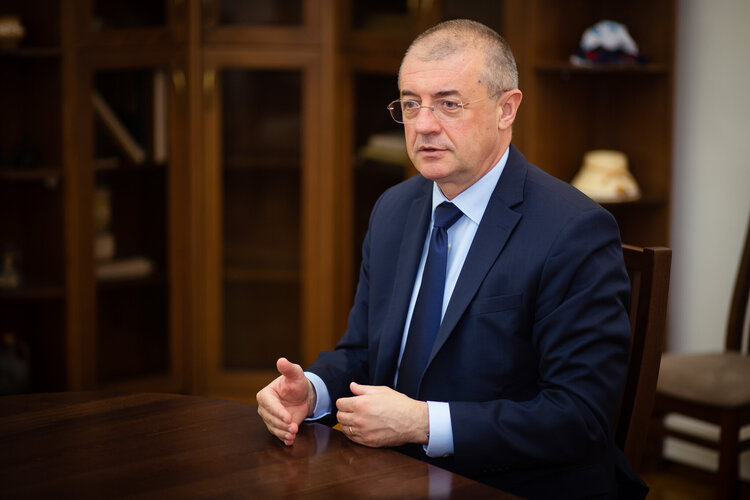
Another recent example is the restriction on sugar exports from Ukraine. Ukrainian sugar exports have increased by 440% compared to the previous season. To avoid problems supplying sugar to local markets, Ukrainian authorities imposed a temporary ban on sugar exports – from June 5 to September 15, 2023. One Romanian company made an advance payment of $2 million for 15,000 tonnes of sugar. Prior to restrictions imposition, it received 8,000 tonnes of sugar, and now awaits the outstanding 7,000 tonnes..
We do understand the current Ukrainian situation, but we also do believe that the restrictions should not apply to this particular company – as their contract has been signed well before the restrictions introduction. Moreover, the Romanian side conducted payment for the entire shipment prior to restrictions imposition. In fact, all the stated amount of sugar was ready for delivery to Romania. Still, the process was put to a halt.
– Is there any indication as to when exactly the mentioned 7,000 tonnes get exported from Ukraine to Romania?
The Romanian company requests the cargo delivery right away. The discussed volumes of sugar awaiting delivery currently remain in Vinnytsia, failing to get even to the border. So, Romania now requires that Ukrainian authorities approve the respective contract execution in total.
As an EU member-state, our country filed its complaint to the European Commission, because this is a case on foreign trade. And it will be the European Commission to discuss the mentioned issues with the Minister of Economy of Ukraine.
– Speaking of bans. As of now, there are bans to export grain, corn, rape plant and sunflower from Ukraine to Romania. Could you elaborate on preconditions leading to such bans.
– I would like to mention that among all EU Member States neighboring on Ukraine, 60% of all solidarity lanes for food exports from Ukraine go through Romania. Because of such large volumes, certain distortions occur on the Romanian market.
Despite this, we did not apply national unilateral measures to restrict Ukrainian exports to Romania. The respective decisions were taken at the European Commission level based on concrete data and at our request. We currently cooperate with the European Commission and the Ukrainian authorities, trying to find solutions acceptable to all. It is important for us to continue efforts on facilitating agricultural goods transit through Romania, without creating substantial economic difficulties for Romanian farmers.
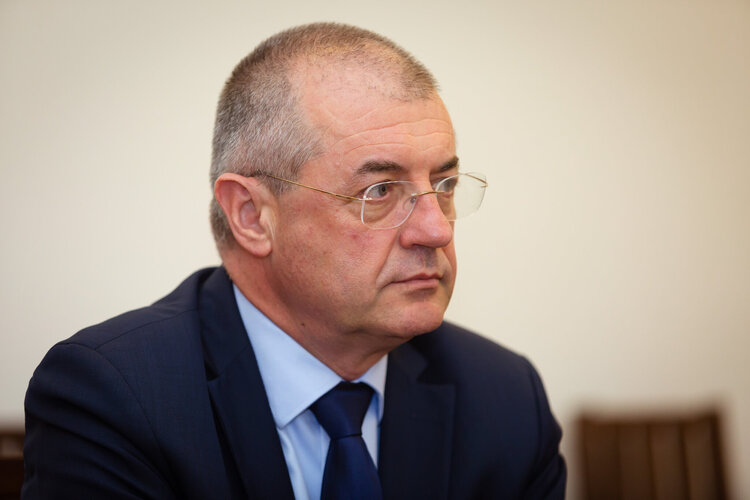
Previously, there was no route for Ukrainian exports in Romania – it appeared only in early 2022. So, the pressure on Romanian infrastructure increases. And public authority representatives of both countries try to ensure certain investment to upscale cargo transportation volumes by road, railway, and Danube corridors.
Another issue is silos. Romania itself is an important producer of grain. And at the backdrop of huge volumes of grain arriving from Ukraine and our own grain production, the existing infrastructure capacity for grain storage is no longer sufficient. At the same time we must try to transship exported grain as soon as possible so that the existing grain storage infrastructure meets the needs of both Ukrainian and Romanian producers. And we build new silos as well.
Yet another issue is as follows. There were several registered cases of Ukrainian companies selling grain at Romanian market at extremely low dumping prices. Typically, such companies do not pay taxes to the Ukrainian authorities ). Needless to say that such cases do bring prices at Romanian market down and make Romanian farmers unhappy.
– What is the scale of incurred losses to Romanian farmers triggered by cheap Ukrainian grain?
– Substantial indeed. For example, in one case the Ukrainian grain was sold at 0.2 $/kg, while the international market price for Ukrainian grain, was, on that specific date, of 0.47 $/kilo.
Therefore, jointly with the European Commission, we developed a mechanism to cover the losses incurred by Romanian farmers due to the distortion of the market and the dramatic increase of costs.
On the other hand though, because of the current temporary restriction on exports to Romanian market, the “dumping price game” is more difficult today. Currently, transit through Romania goes to the port of Constanța and the Danube ports – on a monthly basis, some 2.4 million tonnes of Ukrainian grain are transited through us.
– What are grain prices in Romania?
– We have some restrictions on GMOs, so, as a rule, Romanian grain is considered premium class and is, therefore, more expensive. Several days ago, the cost of our grain (wheat) was about $185 per tonne.
– What is your opinion on the continuation/ cancellation, after September 15, of the export ban on Ukrainian agricultural produce to Romania? It is already now that some EU countries request the European Commission to extend this ban until end 2023 …
– It is much too early to say: the harvest in our countries has only just begun. Let us see if we run into logistical problems and if we can handle them successfully.
Today, we try to develop a joint platform for our customs to exchange information, including with the Republic of Moldova, since a certain part of the Ukrainian grain arrives to Romania through Republic of Moldova. If this platform becomes operational, the time-span for trucks to pass customs controls will decrease – and, consequently, the waiting time at the border will diminish. And when we understand that no more time is lost waiting to cross the border, the costs of transportation may also go down.
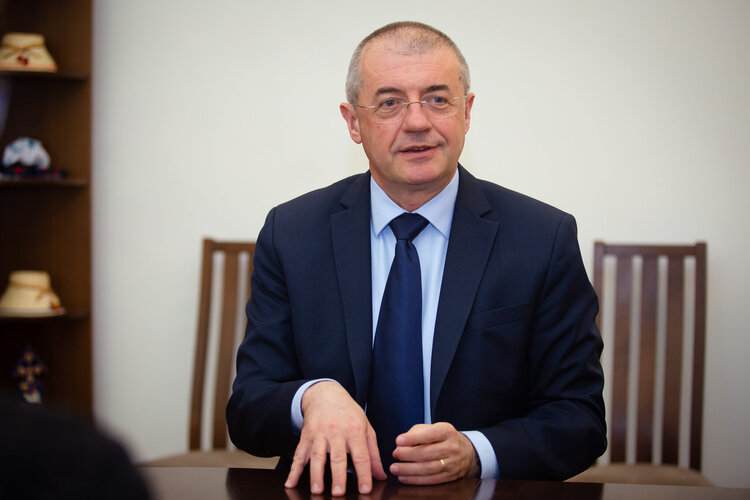
However, we are in July now, and now we still have uncertainties as to the harvested volumes. So, we await the volumes of this year harvest, its storage capacity, as well transportation prices. At the same time, we need to wait for the total financial compensation claims from Romanian, Polish, Slovak and Hungarian farmers become known and to understand better the challenges they are facing.
– President Zelensky stated that over one trillion USD is needed to rebuild Ukraine after war. Currently, Ukraine designs a system allowing partner-countries “undertake patronage” of regions/ towns/ companies. Several EU countries have already expressed their willingness. Who does Romania stand ready to “patron”?
– The subject of rebuilding Ukraine has been discussed in Lugano, Berlin, Paris and London, with our presence at all these meetings. Romanian efforts will mostly be channeled through the EU. We would also like to implement some reconstruction projects under the Romanian flag. Since we have no experience in projects of such magnitude, we have set up a consultation platform with the private sector willing to support the Romanian government in assisting the reconstruction of Ukraine. We currently receive proposals and analyse them to understand whether we can indeed implement these reconstruction projects and when, right away or when the war is over.
Still, our current main contribution to reconstruction of Ukraine is focused on developing the infrastructure at our the border, to increase the number of checkpoints and their capacity and, hence, enhance communication between our countries. For example, we have built a temporary bridge on the border with the Republic of Moldova so that Ukrainian trucks with grain and foods could go to Romania and other markets.
– You have mentioned that certain Ukrainian reconstruction projects Romania plans to implement under its own national flag rather than that of the EU. Could you please detail these projects, and what sectors they include?
– It is too early to say, but our previous positive experience includes upgrading schools and kindergartens. Over past years, we engaged in several small projects in the Luhansk and Donetsk regions, in the territories controlled by Ukraine.
Currently we are building a bridge over the Tisza river – between Sighetu Marmației and the village of Bila Tserkva in Transcarpathia. The cost of the project is €34 million: it is financed by Romania and the European Commission. In summer, the pillars of the bridge will already be there in the water, and we plan to complete the construction in 2024.
If you have read this article to the end, we hope that means it was useful for you.
We work to ensure that our journalistic and analytical work is of high quality, and we strive to perform it as competently as possible. This also requires financial independence. Support us for only UAH 196 per month.
Become a Mind subscriber for just USD 5 per month and support the development of independent business journalism!
You can unsubscribe at any time in your LIQPAY account or by sending us an email: [email protected]


